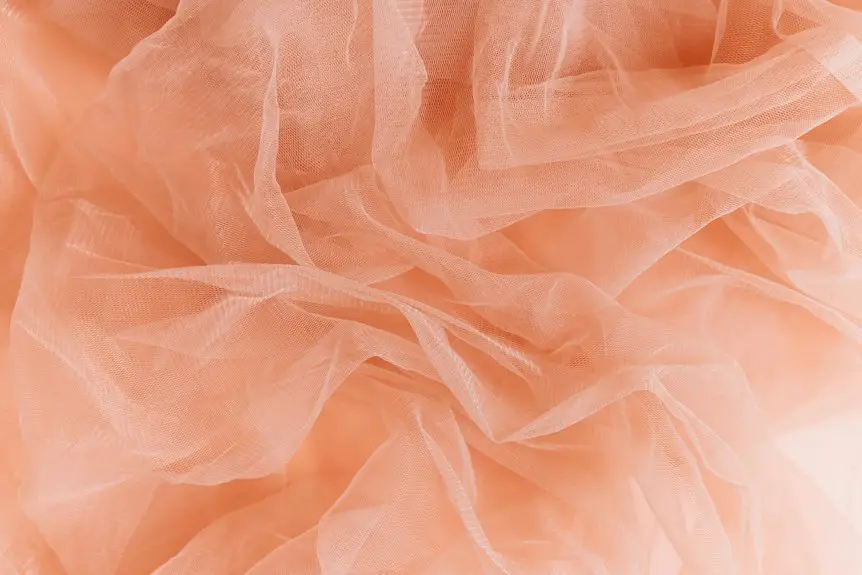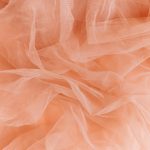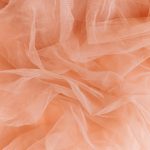Gauze fabric comes in several types, each suited for different needs. Cotton gauze is soft, breathable, and great for sensitive skin or medical use. Cheesecloth gauze is lightweight and porous, perfect for crafting or straining. Medical gauze offers sterile absorbency for wound care. Crinkle gauze resists wrinkles, while double gauze is layered for extra durability. Silk gauze gives you a sheer, luxurious feel. Understanding these will help you pick just the right gauze for your project’s demands.
Table of Contents
Key Takeaways
- Gauze fabric is lightweight, breathable, and loosely woven, ideal for clothing, medical use, and home textiles requiring ventilation and softness.
- Cotton gauze offers softness, breathability, hypoallergenic properties, and biodegradability, suitable for baby clothes and medical dressings.
- Cheesecloth gauze is a loosely woven cotton fabric used for straining, crafting, and lightweight protection without heavy absorption.
- Medical gauze is sterile, highly absorbent cotton fabric designed for wound care, preventing contamination and irritation.
- Specialty gauzes like crinkle and double gauze provide texture, wrinkle resistance, added softness, and durability for various applications.
What Is Gauze Fabric?
Gauze fabric is a lightweight, loosely woven material known for its open weave and breathability. When you handle it, you’ll notice how airy and delicate it feels, making it perfect for applications where ventilation matters.
It’s created using a plain weave, which means the threads cross over and under each other in a simple pattern, leaving spaces between them. This structure gives gauze fabric its signature transparency and flexibility.
You’ll find gauze used not only in clothing and home textiles but also in medical settings, thanks to its ability to absorb fluids while allowing air to circulate. Its versatility stems from this balance of strength and lightness, making it a popular choice whenever you need fabric that’s both gentle and functional.
Cotton Gauze: Soft and Breathable
You’ll appreciate cotton gauze for its natural fiber benefits, like softness and breathability that keep you comfortable.
It’s perfect for baby clothes, lightweight scarves, and even medical dressings.
To keep it in great shape, you’ll want to wash it gently and avoid high heat drying.
Natural Fiber Benefits
Although many fabrics offer unique qualities, cotton gauze stands out for its softness and breathability, making it a top choice for those who prioritize comfort.
As a natural fiber, cotton allows your skin to breathe, reducing the chance of irritation or overheating. You’ll appreciate how cotton gauze naturally wicks moisture away, keeping you dry and comfortable throughout the day.
Since it’s biodegradable and renewable, choosing cotton gauze supports environmental sustainability, letting you feel good about your fabric choice.
Plus, cotton fibers tend to be hypoallergenic, making this fabric ideal if you have sensitive skin.
When you pick cotton gauze, you’re not just choosing softness—you’re opting for a fabric that works with your body and the planet, blending comfort with natural benefits effortlessly.
Ideal Uses and Care
Because cotton gauze is soft and breathable, it works perfectly for clothing, baby products, and lightweight home textiles.
You’ll find it ideal for summer dresses, scarves, swaddles, and curtains where comfort and airflow matter.
When caring for cotton gauze, wash it gently in cold water to maintain its delicate texture.
Avoid harsh detergents and bleach to prevent fabric damage.
You can air dry or tumble dry on low heat, but removing it promptly helps avoid wrinkles.
Iron on a low setting if needed, but usually, its natural crinkled look adds charm.
Cheesecloth Gauze: Lightweight and Porous
You’ll find cheesecloth gauze is made from loosely woven cotton, making it lightweight and highly breathable.
It’s commonly used for straining liquids, crafting, and even medical purposes where gentle coverage is needed.
While its porous nature offers great airflow, it may not provide the durability or absorbency required for heavier tasks.
Material and Weave
Cheesecloth gauze stands out for its lightweight and porous structure, making it ideal for applications that require breathability and gentle coverage.
When you look at its material, you’ll find it’s typically made from 100% cotton, which guarantees softness and natural absorbency. The cotton fibers also contribute to its biodegradable and eco-friendly nature.
The weave is a loose, open plain weave, meaning the threads cross over each other in a simple crisscross pattern with plenty of space between them. This openness creates the characteristic mesh-like texture you expect from cheesecloth gauze, allowing air and moisture to pass through easily.
Because of this, you can rely on cheesecloth gauze to offer lightweight protection without suffocating whatever it covers.
Common Uses
Lightweight and breathable, cheesecloth gauze serves many practical purposes where gentle coverage is essential. You can use it in cooking to strain liquids or wrap herbs for flavor infusion. It’s also popular in crafting, offering a soft texture for decorations or fabric dyeing projects. In medical settings, cheesecloth gauze provides a breathable layer for wound care without sticking to the skin.
Here’s a quick look at common uses:
| Use Case | Description |
|---|---|
| Cooking | Straining, wrapping herbs, making cheese |
| Medical | Dressing wounds, padding, bandaging |
| Crafting & DIY | Fabric crafts, dyeing, decorative wraps |
With its versatility, you’ll find cheesecloth gauze handy in kitchen, craft, and health applications.
Benefits and Limitations
Although its porous nature makes it highly breathable and easy to work with, you should be aware that cheesecloth gauze may not offer the best protection against heavy fluids or debris.
Its lightweight structure allows air to flow freely, making it ideal for applications where ventilation matters. You’ll appreciate how quickly it dries and how soft it feels against the skin.
However, because of its loose weave, it won’t provide a strong barrier for wounds that require heavy absorption or protection from contaminants.
Also, it tends to tear more easily than denser gauze types, so you’ll need to handle it gently.
If you need something durable yet breathable, cheesecloth gauze works well, but for tougher tasks, consider a sturdier option.
Medical Gauze: Sterile and Absorbent
When you need a reliable material for wound care, medical gauze stands out for its sterility and absorbency. It’s designed to prevent infections while soaking up fluids, keeping wounds clean and promoting faster healing. You can find it in sterile packaging, ready for immediate use in hospitals or at home.
Here’s a quick look at key features of medical gauze:
| Feature | Description |
|---|---|
| Sterility | Packaged to be free from germs |
| Absorbency | Quickly soaks up blood and fluids |
| Material | Often made from cotton for softness and breathability |
Using medical gauze guarantees you manage wounds safely and effectively, reducing risks of contamination and irritation.
Crinkle Gauze: Textured and Wrinkle-Resistant
Because crinkle gauze features a unique textured surface, it resists wrinkles better than smooth fabrics, making it easier for you to handle and apply.
This texture comes from the fabric’s intentional crinkling during production, which not only adds visual interest but also improves flexibility. When you work with crinkle gauze, you’ll notice it drapes well and maintains its shape without needing constant ironing.
It’s lightweight and breathable, perfect for clothing like scarves, blouses, or baby blankets where comfort matters. Plus, the wrinkle resistance saves you time and effort during care and wear.
If you want a fabric that combines softness with a casual, textured look while staying low-maintenance, crinkle gauze is an excellent choice.
Double Gauze Fabric: Layered and Durable
Crinkle gauze offers a textured, wrinkle-resistant option, but if you need something with added strength and softness, double gauze fabric stands out.
This fabric consists of two lightweight layers of gauze woven together, creating a breathable yet durable material. You’ll appreciate double gauze for its gentle feel against the skin, making it ideal for baby clothes, blankets, and summer garments.
Its layered construction also provides better insulation while remaining light and airy. Handling double gauze, you’ll notice it drapes nicely and resists excessive stretching. Plus, it washes well without losing shape.
Whether you’re sewing for comfort or durability, double gauze offers a balanced choice that’s both soft and sturdy, perfect for projects requiring a bit more resilience than single-layer gauze.
Silk Gauze: Sheer and Luxurious
Silk gauze captivates with its delicate transparency and smooth texture, offering a touch of luxury to any project.
When you work with silk gauze, you’ll notice how lightweight and breathable it feels against your skin, making it ideal for elegant scarves, veils, or lightweight apparel.
Its sheer quality allows light to pass through gently, creating an ethereal effect perfect for layering or adding subtle sophistication.
You’ll appreciate how silk gauze drapes beautifully, giving your creations a fluid, graceful movement.
While it requires careful handling due to its delicate nature, the effort pays off with a fabric that exudes refinement.
If you want to infuse your work with softness and luxury, silk gauze is a fantastic choice.
Choosing the Right Gauze for Your Project
Working with delicate fabrics like silk gauze shows how important it’s to pick the right type of gauze for your project.
First, consider the purpose: do you need softness, breathability, or durability? For lightweight clothing, silk or cotton gauze works beautifully. If you’re making bandages or cleaning cloths, opt for cotton gauze for its absorbency.
Think about texture too—some gauzes are rougher and better suited for medical or industrial use. Also, check the weave tightness; looser weaves offer more airflow but less structure, while tighter weaves provide more support.
Finally, factor in care instructions and color options to match your needs. Choosing the right gauze guarantees your project looks great and performs well.
Frequently Asked Questions
How Is Gauze Fabric Traditionally Manufactured?
Think of weaving a delicate spider’s web: you traditionally manufacture gauze fabric by weaving loosely twisted yarns in an open plain weave. You carefully intertwine threads to create that light, airy texture you need.
Can Gauze Fabric Be Dyed Easily?
You can dye gauze fabric quite easily since it’s lightweight and porous, allowing dyes to penetrate well. Just make sure to use appropriate fabric dyes and follow instructions to achieve vibrant, even colors on your gauze.
What Are Common Care Instructions for Gauze Fabric?
Think of gauze as a delicate butterfly—handle it gently. You’ll want to wash it cold, avoid harsh detergents, and air dry to keep its airy softness fluttering. Iron on low if needed, but don’t overdo it.
Is Gauze Fabric Environmentally Friendly?
You’ll find gauze fabric’s environmental friendliness depends on its material. Natural fibers like organic cotton are eco-friendly, but synthetic blends aren’t. So, check fabric labels to make greener, more sustainable choices for your projects.
What Historical Uses Does Gauze Fabric Have?
Imagine wrapping a fragile, ancient relic—gauze once dressed wounds on battlefields, like a gentle shield for soldiers. You’ll find it’s been a lifesaver in medicine, bandaging injuries and protecting delicate skin through history’s toughest times.







